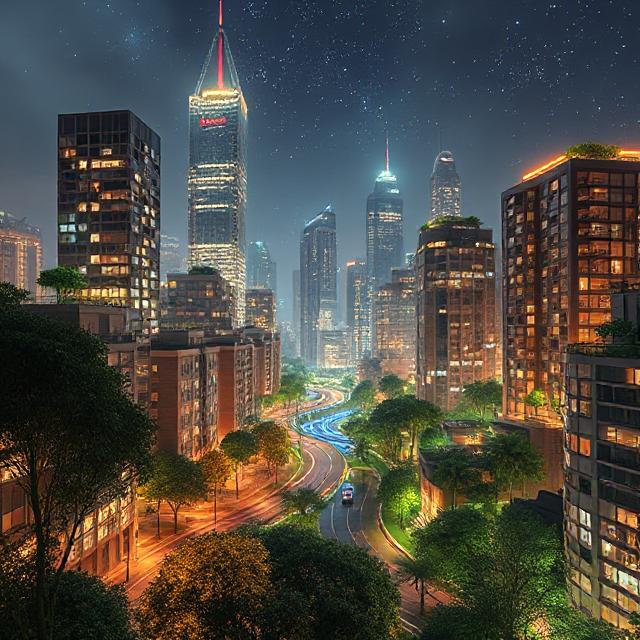The Vision of Tomorrow’s Cities
The architecture of the future is about more than form and function. It reflects our values, technology, and survival instincts. From polished utopias in climate-controlled settings to rugged desert colonies made from reclaimed metal and clay, two main styles of futuristic architecture shape our vision of sustainable living in Y3K:
One is sleek, structured, and focused on abundance. It emphasizes harmony with technology and a clean, optimized look.
The other is gritty, grounded, and resilient. It thrives on adaptability and resourceful use of found materials.
Both approaches provide important insights as we create the cities of tomorrow.
Path 1: Clean-Line Eco-Futurism
This vision focuses on symmetry, peace, and smart efficiency. Buildings are often part of a closed-loop system with clean energy, zero waste, and integrated digital infrastructure.
Key Traits:
- Smooth curves, white or metallic surfaces, and transparent materials like glass or advanced composites
- Floating architecture or elevated buildings to reduce land impact
- Modular designs that allow for scalable, reconfigurable living units
- Energy-efficient skins: smart walls that control light, air, and temperature
- Central hubs for collective access to shared AI-driven utilities
- Subtle bioluminescent lighting and hidden tech interfaces
Real-World Parallels:
- Net-zero energy buildings
- 3D-printed structures with adaptive insulation
- Vertical green towers with built-in agriculture
- AI-managed microgrid neighborhoods
Path 2: Adaptive Survivalist Architecture
This style focuses on building with what is available. It thrives in extreme climates using locally sourced or repurposed materials. It embraces a lived-in, layered look that values imperfection and functionality.
Key Traits:
- Earth-toned surfaces, rough plaster, rusted metal, and raw stone
- Thick walls, few windows, and semi-subterranean layouts for temperature control
- Open-air courtyards for airflow and community gatherings
- Reclaimed tech integrated into structures, like fans, wiring, and satellite parts
- Buildings that evolve over time, showing signs of past upgrades and repairs
- Handcrafted decorations, like carved doors, patterned textiles, and artisan details
Real-World Parallels:
- Rammed-earth and adobe buildings in dry regions
- Shipping container homes and modular shelters
- Passive cooling designs inspired by desert living
- Off-grid, solar-powered homesteads
Blending the Two: Hybrid Y3K Design
In practice, future cities may combine both styles. The aim is to merge technological intelligence with material honesty. This results in buildings that appear futuristic but remain grounded, sustainable, and adaptable to their surroundings.
Hybrid Concepts:
- Use smooth, curving forms wrapped in locally sourced clay or concrete
- Create tech-enhanced interiors within rugged, low-energy outer shells
- Combine high-efficiency solar skins with modular frames for quick deployment
- Include aesthetic irregularity in smart designs to avoid a cold, clinical feel
- Implement decentralized systems for water, food, and power to give each unit independence
How to Bring This into Your Own Space
Whether you're an architect, city planner, or just someone redecorating a studio apartment, here’s how to infuse Y3K architectural energy into your environment:
For Clean-Line Eco Vibes:
- Choose minimalist furniture with curved or floating elements
- Incorporate smart home technology with subtle visual hints, like hidden LED strips
- Use a color palette of white, silver, and translucent materials
- Feature plant walls, smart mirrors, and voice-activated systems
- Design spaces to feel open, decluttered, and fluid
For Adaptive Grit:
- Expose materials like concrete, steel, and textured wood
- Intentionally include raw, recycled, or vintage pieces
- Mix in handmade pottery and textiles with irregular edges
- Consider muted, dusty color palettes such as ochre, sienna, and faded gray
- Layer your space with stories and history, ensuring every item has significance
